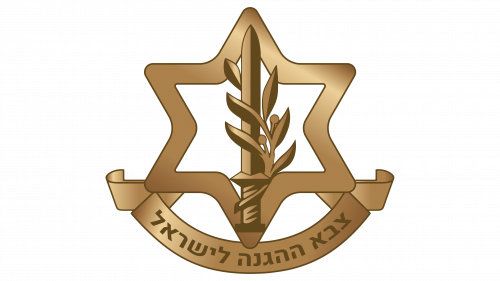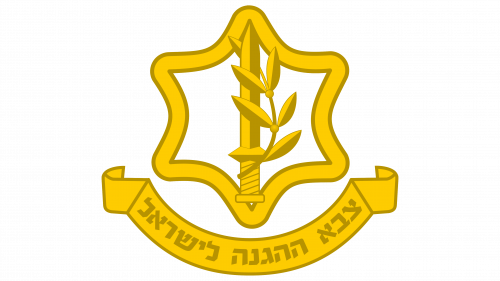 Israel Defense Forces (IDF) Logo PNG
Israel Defense Forces (IDF) Logo PNG
The emblem of the Israel Defense Forces (IDF) is as unique as the army it represents. It is a symbol of steadfastness and unwavering determination, regardless of external circumstances. This is evidenced by the monolithic composition, the width of the stripes, and the color palette. Everything in the emblem is so harmoniously combined that it visually merges into a single structure that cannot be divided into parts.
Israel Defense Forces: Brand overview
The Israel Defense Forces (IDF) – the Israeli army, whose task is to fight against external enemies of the state. It participates in all of the country’s military conflicts, protecting its territorial integrity. A unique feature of the armed forces is the inclusion of both men and women, who are also subject to compulsory conscription. The “Tzahal” (Hebrew acronym) was created after Israel’s declaration of independence in the spring of 1948 by order of the state’s founder, David Ben-Gurion.
Meaning and History
The Israeli army is involved in all armed conflicts, periodically arising in relations with unfriendly neighbors. It was originally formed from recruits who were part of the Haganah, Irgun, and Lehi and later became a conscripted military force with an annual compulsory draft among the population. All citizens of the country who have reached a certain age are subject to mobilization for compulsory service: men from 18 to 29 years of age women from 18 to 26 years of age.
The Israel Defense Forces (IDF) also places a unique emphasis on the active development of innovative technologies to complement its military equipment. Its arsenal includes tanks, armored personnel carriers, defense systems, missiles, assault rifles, submachine guns, and more of its own design. Very original is also the emblem, the main theme of which is peace. This is clearly evidenced by the olive branch, which has long been considered a symbol of peace, good news, and victory.
What is the Israel Defense Forces (IDF)?
The Israel Defense Forces (IDF) is the Israeli army, formed by order of David Ben-Gurion immediately after the declaration of independence of the state in 1948. Its primary mission is to defend the country from enemies who infringe on its territorial integrity, as well as political, physical, and any other freedom. It represses attempts by enemies to disrupt the normal functioning of society and is conscripted: both men and women serve.
1948 – today

The basis of the emblem is the classic Star of David. It is an ancient sign symbolizing the spiritual center and the unity of the Jewish people and Israel. In the Middle Ages, it was used by the Jewish king and his soldiers, who put on their shields a hexagram consisting of two equilateral triangles. This is how it looks to this day. Some use triangles, and some do not, such as the emblem of the Israel Defense Forces (IDF). There are no edges in it – only six corners are present, denoting the rays. At the same time, the star is double: one figure is internal and is in the negative space (white in the center), and the other is external, outlined by a thin frame of dark color. The raised sword divides it into two parts.
The cold weapons are positioned with the blade upwards and, due to the intensified shading on the right side, seem voluminous. They are wrapped by an olive branch with six leaves, which in shape resemble short sharp blades. Below the Star of David stretches a wide ribbon with an inscription in Hebrew. The ribbon has wavy ends and a curved center resembling an inverted arch. All elements are colored in a golden-beige shade with a slight sheen. The play of light is provided by a subtle gradient from highlights to shadows.
Font and Colors
The inscription “Israel Defense Forces” is in Hebrew. The font used for it is the sans-serif uppercase font. The letters are bold, flat, and straight, with a balanced combination of rounded curves and angular edges.
The palette of the emblem is gold with a slight beige undertone, which gives the design a natural feel. The emblem also features the interplay of light and shadow, expressed through a gradient. Contours, borders, shadows, and letters are colored in dark brown.





